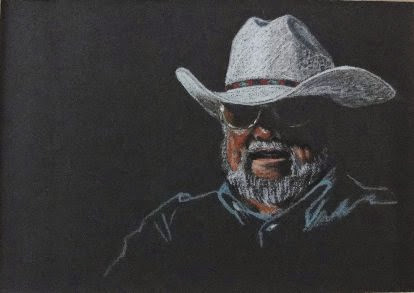After literally
hundreds of articles as a weekly newspaper columnist and also on this blog, I’m
at a point now where I really don’t know if I’ve written about something more
than once. I apologize in advance if you
find stuff on my blog that you’ve read before. Warning – it’s probably going to
get worse.
With more
road behind than lies ahead, I tend to look in the rear view mirror for
material to toss at you in a post. Here
I go again.
I have
friends who live part of the year in Hawaii . That seems idyllic to me. I’ve been to many tropical islands and
thought that I could live happily on several of them, but it’s the beautiful turquoise
water in places like Polynesia that seems to
overwhelm me.
I’ve only
visited Hawaii
once and that was when I was young, single, and stupid. “Vacations” for me were always about
adventure and exploration.
During my
one and only trip to Hawaii ,
I wanted to learn to hang glide and spent a day looking for a particular cliff
where hang gliders plied their skills. I
figured that someone would give me a shot at it. Fortunately, I didn’t find the location. I came back to town to learn that three guys
were killed that day at that very cliff.
There was something about wind or down drafts.
But I was
able to fly in Maui with an instructor on a two-man
glider. As you know, that’s a big “wing”
that you hang from while using a bar to control your flight. The instructor
was concerned that I would overpower him if I panicked and we could crash, but
I was perfectly calm, enjoying the flight and following instructions.
With no
rope or any connection to the earth, we were free to glide over the island and
the water. It was the closest to being a
bird that I’ve ever experienced.
Unfortunately,
not long after my flight, the instructor took another “student” up and they
crashed. Both were killed. Evidently I
was one of his last students. Very sad.
On that
same trip, a Canadian friend and I “borrowed” a plane from the Maui airport,
where he worked, and flew to the Island
of Lanai
A more
humorous event comes to mind when I wanted to try to body surf. I rented a car and drove around Oahu , looking for a place where the waves were said to be
huge. I came around a turn in the road
and spotted the largest waves I had ever seen.
This beach was known for the size of the waves.
I parked,
got into my trunks, and bolted for the beach. I charged the next mountain of
water, but when the wave hit me, I thought I was hit by a train. I have never
felt that kind of force. The wave
pummeled me, finally driving me far up the beach as the water monster retreated
in victory, leaving me high and dry and seriously stunned.
I looked
down to see my trunks around my ankles as an audience of natives laughed at the
naked “haole,” who sat disoriented in the sand.
I didn’t want it to end that way, so I pulled up my trunks and sprinted
toward the waves again. And again, the
huge mountain of water won. I ended up
in the same spot with my head spinning.
This time my trunks hung precariously on the big toe of my right foot. I appreciate that toe to this day. It saved me from a long, naked sprint to my
car, past a laughing audience.
Again, I
couldn’t let the locals down, so I tried once more. This time I dove straight through the monster
and somehow ended up beyond the wave. Victory
at last. They say it’s best to leave
your audience wanting more, so I rode a wave to shore, ran past a disappointed audience
with my trunks on, jumped in the car and wrestled with questions of my sanity
during the drive back to town.
Even now,
when Gayle and I travel, I don’t want to sit on a beach soaking up the sun. I can do that at home. I’d rather rent a motorcycle and explore an
island or try scuba diving, which I did in Bora Bora . To be honest, that scared the daylights out
of me. Human beings aren’t supposed to
breathe underwater.
I’ve been
lost in the jungle in Costa Rica
and almost lost in a crowded market place in Tunisia , where dark female eyes
peered out at me from inside black garbage bags. There were many other “mini-adventures,” but
somehow I still want a vacation to be one of exploration and adventure.
Exploring
the buffet on a cruise ship, with a bunch of round guys with skinny white legs
and Hawaiian shirts isn’t really an adventure.
But if that’s all that’s left, I’ll go for the prime rib.







